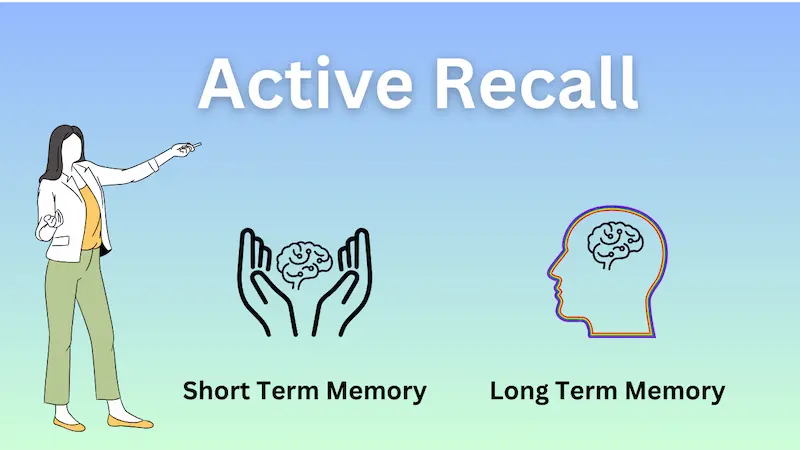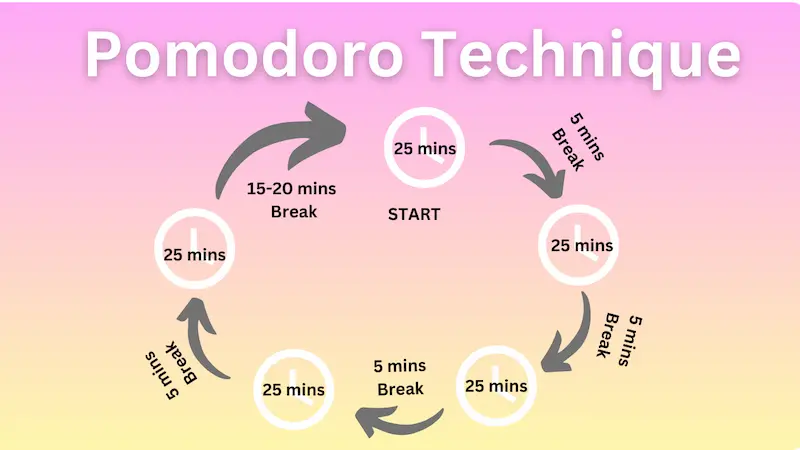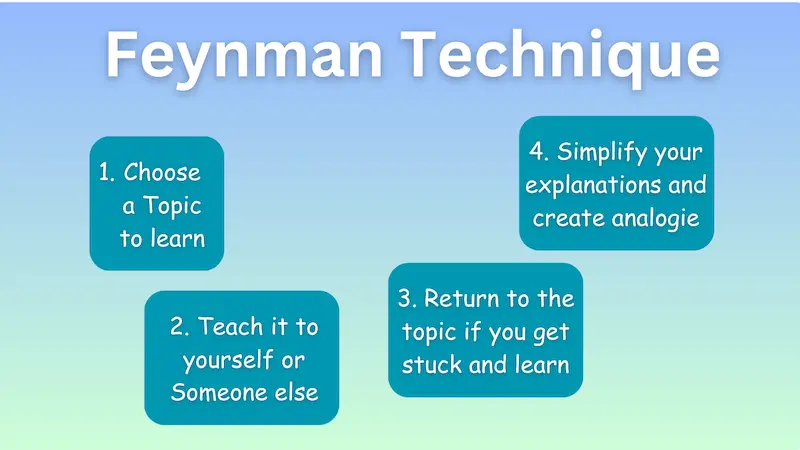3 Secret Study Tips for Academic Success: In the fast-paced world of education, students are often searching for effective study strategies that can help them achieve academic excellence. If you’re one of those students, you’re in the right place! In this article, we’ll reveal three secret study tips that can elevate your study game and pave the way for academic success.
Tip 1: The Power of Active Recall


Active recall is a potent study technique that involves actively stimulating your memory during the learning process. Instead of passively reviewing notes or textbooks, actively challenge yourself to remember and recall information. This method not only strengthens your memory but also enhances your understanding of the material.
How to Use Active Recall:
Active recall is a simple yet highly effective study technique. It involves actively stimulating your memory during the learning process. Instead of merely reviewing your notes or textbooks, you challenge yourself to recall information from memory.
- Take Effective Notes: During lectures or while reading your textbooks, take clear and concise notes. This will serve as your study material.
- Cover and Recall: After a study session, cover your notes and try to recall the main concepts, facts, or definitions. Test your memory without looking at the material.
- Repeat and Review: Repeat the process for the entire study session. Keep revisiting the material, covering it, and testing your recall until you can confidently remember the information without looking at your notes.
Example:
Imagine you’re studying for a history exam, and you’ve just read about a significant historical event, let’s say the American Revolution. Instead of rereading the same section, close your book and jot down key facts about the event from memory. This active engagement with the material will reinforce your memory and understanding.
Active recall is a powerful tool for long-term retention and comprehension. It forces your brain to actively retrieve information, strengthening the neural pathways associated with that knowledge. This technique is particularly effective for subjects that require factual recall, such as history, science, or vocabulary.
Tip 2: The Pomodoro Technique


The Pomodoro Technique is a time management method developed by Francesco Cirillo in the late 1980s. It’s designed to improve focus and productivity during study sessions. The technique is named after the Italian word for “tomato” because Cirillo initially used a tomato-shaped kitchen timer to track his work intervals.
How to Use the Pomodoro Technique:
The Pomodoro Technique is straightforward and flexible, making it a valuable tool for students of all ages. Here’s how to implement it:
- Choose a Task: Select the task you want to work on. This could be studying for an exam, writing a research paper, or completing homework assignments.
- Set the Timer: Set a timer for 25 minutes (one Pomodoro). During this time, you’ll focus exclusively on your chosen task.
- Work Diligently: Work on the task with undivided attention until the timer rings. Avoid distractions, and stay fully engaged in the work.
- Take a Short Break: When the timer goes off, take a short 5-minute break. Use this time to stretch, relax, and recharge.
- Repeat and Schedule Breaks: After completing one Pomodoro, repeat the process. Work for 25 minutes, followed by a 5-minute break. After four Pomodoros, take a more extended break of 15-30 minutes.
Example:
Let’s say you’re preparing for a math exam. Instead of sitting down for hours on end, you can use the Pomodoro Technique. Study a specific math concept for 25 minutes, take a 5-minute break to stretch, then dive into another Pomodoro session. The structured breaks will help prevent burnout and keep you focused.
The Pomodoro Technique is particularly effective because it leverages the psychological principle of time management. Knowing that you have a defined, manageable work period (25 minutes) encourages focused effort. The breaks serve as rewards and opportunities to reset your concentration.
Tip 3: The Feynman Technique


The Feynman Technique, named after the Nobel Prize-winning physicist Richard Feynman, is a simple yet powerful method for deepening your understanding of complex subjects and concepts. It involves breaking down topics into simplified explanations that anyone, even a child, can understand.
How to Use the Feynman Technique:
The Feynman Technique is a four-step process that helps you gain a deeper understanding of complex topics and concepts:
- Choose a Topic: Select the topic or concept you want to study or understand better.
- Explain it Simply: Pretend you’re explaining the topic to a 6th grader who has no prior knowledge of the subject. Use simple language and clear explanations.
- Identify Gaps: While explaining, you may encounter gaps in your understanding or areas where your explanation isn’t clear. These gaps highlight areas you need to revisit and study further.
- Review and Simplify: Go back to your study materials, textbooks, or notes, and fill in the gaps in your understanding. Then, simplify your explanation further, aiming for clarity and simplicity.
Example:
Suppose you’re studying complex chemistry reactions. Break down the reaction into its basic components, use everyday language to describe what’s happening, and draw comparisons to real-life scenarios. By simplifying the concept, you’ll gain a deeper understanding.
The Feynman Technique is valuable because it forces you to confront the depth of your understanding. If you can explain a complex topic in simple terms, you’ve truly mastered it. This technique is particularly effective for subjects that involve intricate concepts or theories, such as science, mathematics, or engineering.
In conclusion, these three secret study tips can significantly enhance your learning experience and academic performance. Incorporate active recall, the Pomodoro Technique, and the Feynman Technique into your study routine, and watch your knowledge and confidence grow. Remember, consistent practice and dedication are the keys to success in your academic journey. So, embrace these tips, stay motivated, and achieve the academic excellence you deserve!
3 Secret Study Tips for Academic Success
FAQ
Q1: What is active recall, and how does it improve my studying?
A1: Active recall is a study technique where you actively challenge your memory during learning. Instead of passively reviewing notes, try to recall information from memory. This method strengthens your memory and understanding, making it an effective way to study.
Q2: Can the Pomodoro Technique work for all types of tasks?
A2: Yes, the Pomodoro Technique is versatile and can be applied to various tasks. Whether you’re studying, working on assignments, or tackling projects, breaking your work into focused intervals followed by short breaks can boost productivity.
Q3: How can I simplify complex subjects using the Feynman Technique?
A3: To use the Feynman Technique, choose a complex topic, explain it in simple terms as if teaching it to a child, and identify gaps in your understanding. Then, revisit your study materials to fill those gaps and further simplify your explanation.
Q4: Is the Pomodoro Technique suitable for long study sessions?
A4: Yes, the Pomodoro Technique can be adapted for longer study sessions. You can extend the work intervals and adjust break times to suit your needs while maintaining the principle of focused work followed by short breaks.
Q5: Are these study tips suitable for high school and college students?
A5: Absolutely! These study tips—active recall, the Pomodoro Technique, and the Feynman Technique—are applicable to students of all levels, from high school to college and beyond. They can help improve understanding, retention, and overall academic performance.

